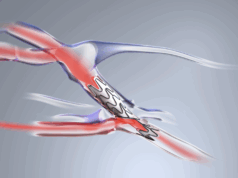
Michael Aragon (End Stage Renal Disease Network 14, Dallas, USA) writes here to assess how home haemodialysis can offer improvements to patients’ freedom—as well as their outcomes.
For decades, life-preserving dialysis treatment has been perceived and experienced by end-stage renal disease (ESRD) patients as complex, inflexible and disruptive to one’s life and activities. Patients who “crash” into maintenance dialysis in the acute setting in the USA are typically funnelled directly into an assigned weekly treatment schedule at a dialysis clinic or hospital. However, this long-held, disempowering, “one-size-fits-all” standard of care has been exposed to be unsustainable in a new age of patient-centred and user-friendly dialysis technology. Providers are finally overcoming long-held barriers to offering patients the ability to live life on their terms, with restored autonomy, agency and control, along with improved clinical outcomes.
What is making this shift possible? Something counterintuitive to the traditional in-clinic model: focus on the patient experience.
Home haemodialysis (HHD) has been used for decades on a small percentage of patients in developed nations throughout the world, allowing them to perform their own treatments at home, while reducing cost, improving efficiency and demonstrating better outcomes. However, for most patients, this option has either been unavailable, inaccessible or too complex.
Peritoneal dialysis (PD), more widely used than HHD, does offer improved quality of life for patients managing their own treatment in comparison to in-centre dialysis, but is not the long-term answer for most patients. Patients are burdened by needing to treat eight to 10 hours, seven days a week. Cardiovascular-related mortality is higher when compared to in-centre haemodialysis patients who have an arteriovenous fistula (AVF)1, half of patients will fail on PD after two years2 and half of PD patients are chronically fluid overloaded.3
What’s more, a growing body of clinical evidence is revealing impressive benefits of HHD versus in-centre haemodialysis. Findings include an improved patient quality of life, reduced post-dialysis recovery time4, lower drug burden5,6, lower mortality7 and lower risk of infection exposure. Nephrologists and dialysis nurses have even stated that they would choose HHD for themselves, over all other dialysis options.8
Perceived barriers associated with implementing HHD successfully have come from the provider and patient side, but innovative new technology is helping to ease many of these fears and give both groups confidence. With prior technology, a low level of HHD education amongst providers, physician unfamiliarity with its unique prescribing of flow fraction and dialysate volume and the complexity of the device have impacted the ability to successfully send more patients home. Patients’ concerns include the burden of care they would take on themselves at home, the fear of unsuccessful treatment at home, and also not wanting to turn their home into a clinic-like setting.
Innovation is the key to alleviating these fears. As we look back through recent history, innovation has often facilitated solutions for some of the greatest healthcare challenges the world has faced. Advancements in cardiology, surgery, prosthetics and neurosurgery have improved care efficiency, outcomes and patient quality of life.
Dialysis, after decades of complexity and inflexibility, and fuelled by a rapidly expanding ESRD population, is primed and ready to follow suit. The patient voice for improved quality of life, empowerment and better overall care has never been louder. The pandemic has exposed the inefficiency and limitations of in-centre dialysis. Dialysis at home must become the standard for all. Not out of preference, but out of necessity. Technology innovation has once again provided a solution. The development of the Tablo Haemodialysis System, for instance, represents a new patient-centred technology facilitating personalisation of care that is safe, effective and easy to learn and manage9, and provides an enhanced patient experience. The way ahead is here: it’s home dialysis.
Disclosures: Michael Aragon is chief medical officer at Outset Medical.
References:
- Perl J.Wald, R.McFarlane P, et al. Hemodialysis vascular access modifies the association between dialysis modality and survival. J Am Soc Nephrol. 2011; 22:1113-1121
- CDRG analysis of USRDS data from 2020 report.
- Evolution Over Time of Volume Status and PD-Related Practice Patterns in an Incident Peritoneal Dialysis Cohort. Wim Van Biesen, Christian Verger, James Heaf, et al. CJASN June 2019, 14 (6) 882-893; DOI: https://doi.org/10.2215/CJN.11590918
- Jaber BL, Effect of daily hemodialysis on depressive symptoms and postdialysis recovery time: interim report from the FREEDOM Study. Am J Kidney Dis. 2010
- Kotanko P, Effects of frequent hemodialysis on blood pressure: Results from the randomized frequent hemodialysis network trials. Hemodial Int. 2015
- Daugirdas JT, Effects of frequent hemodialysis on measures of CKD mineral and bone disorder. J Am Soc Nephrol. 2012;
- Marshall, Mark R, Home Versus Facility Dialysis
- Schiller B, Neitzer A, Doss S. Perceptions about renal replacement therapy among nephrology professionals. Nephrol News Issues. 2010 Sep;24(10):36
- Plumb TJ, Alvarez L et al, Safety and efficacy of the Tablo hemodialysis system for in-center and home hemodialysis. Hemodial Int. 2019 Nov; 24(1):22-2












